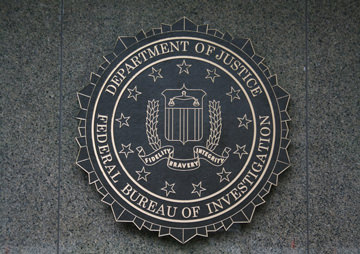Are You Etan Patz? How the FBI Is Searching for a Missing Child As Man Faces Trial for His Murder
By Joaquin Sapien, ProPublicaThis piece first appeared on ProPublica. The 30-year-old American man had set up a nice life for himself in Europe. He’d been there two years. He had a good job with a company he liked, doing fulfilling work. He had a wife, a decent apartment, and the adventure of living in a […] kalavinka (CC BY-NC-SA 2.0)
kalavinka (CC BY-NC-SA 2.0)
By Joaquin Sapien, ProPublicaThis piece first appeared on ProPublica.
The 30-year-old American man had set up a nice life for himself in Europe. He’d been there two years. He had a good job with a company he liked, doing fulfilling work. He had a wife, a decent apartment, and the adventure of living in a foreign place, all while maintaining close ties with his family back in the states.
Then, one day, while sitting in his office last month, he received a strange email. It was from the FBI, and it suggested, in effect, that he might not be who he thought he was 2013 that he hadn’t been born where he thought he’d been born, that his mother and father weren’t his true, biological parents.
The FBI, it turned out, was running down a tip that the man might, in fact, be Etan Patz, the 6-year-old Manhattan boy who famously vanished one morning on the way to his school bus stop in 1979, and who had never been found in the decades since.
The man had to look up the Etan Patz case on Wikipedia. He then, while startled, agreed to talk with an agent from the bureau on the telephone. The agent asked him basic questions about where he had gone to school and where he had lived over the years. None of it made much sense, the man said in an interview with ProPublica. For instance, he was 11 years younger than Patz would have been in 2014.
Moreover, the Wikipedia entry had also noted that the New York City Police Department and the Manhattan District Attorney’s Office had recently solved the case. A man who had worked in a bodega in Patz’s neighborhood had confessed to killing the boy, and was facing trial later this spring.
The man asked the FBI agent why the bureau was still pursuing anonymous leads that Patz was alive? He never got an answer.
Late last year, ProPublica published an examination of the Manhattan District Attorney’s decision to prosecute the man who had confessed to murdering Patz. The accused, Pedro Hernandez, had a history of mental illness, and there was little evidence to corroborate his surprising claim. Hernandez had never been a suspect during years of investigation by the police and the FBI. Indeed, news reports surfaced soon after Hernandez’s arrest in May 2012 suggesting that the FBI didn’t believe that the right man had been apprehended.
The American citizen living in Europe contacted ProPublica after reading our look at the case. He asked that his name not be revealed to protect his privacy and avoid antagonizing the FBI.
“I thought you might want to know that the FBI may be working to prove the child is still alive,” the man said when he contacted ProPublica.
“Obviously, I was surprised,” he said of the episode. “I chuckled. I thought it was funny because it was so unlikely that it would be possible that I could be this person. I had no idea who Etan Patz was.
“I thought it was a hoax,” he said.
Both the New York police and the FBI have, over the years, run down scores of tips, alleged sightings, even the work of a psychic in their efforts to solve the Patz case. It is possible, then, that the FBI was simply trying to be responsible in checking with the man in Europe. But it also might mean the bureau still considers the Patz case to be open, Hernandez’s pending trial notwithstanding.
ProPublica asked the FBI about the man in Europe, and whether it considered the Patz case closed. A spokesman would not comment. The Manhattan District Attorney’s office also declined to comment on this story.
The bureau has had a shifting role in the Patz case for years, surfacing publicly in pursuit of a fresh lead and then fading away again when the trail turned cold.
In “After Etan: The Missing Child Case that Held America Captive,” author Lisa Cohen writes about how FBI agents have heard tales from dozens of people claiming to have information on Patz’s whereabouts: passersby saying they saw him at various places around the country; psychics saying they’d received cosmic messages that his body was buried in some desolate location. One agent administered a DNA test to determine whether a young petty criminal lookalike was the real Etan Patz. Another went to Israel in 1985 to track down the story behind a photograph of Patz that appeared in a Romanian-language magazine published there.
In the early 90s, an assistant U.S. attorney named Stuart GraBois got paired up with Mary Galligan, a young FBI agent who would go on to make history as the Bureau’s first female chief of its New York field office. The two became convinced that a convicted child molester named Jose Ramos was Patz’s true killer. The pair tried to get then Manhattan District Attorney Robert Morgenthau to pursue the case. But the effort failed and, again, the FBI’s involvement in the Etan Patz case slid from public light.
Then, in the spring of 2012, the bureau dispatched agents to dig up the basement of a building in the SoHo neighborhood where Patz disappeared. They thought Patz’s remains might be found in what had long ago been the workshop of a local handyman who had been friendly with the Patz family. It didn’t unearth a body, but it did prompt yet another tip.
A friend or family member of Hernandez’s went to the New York Police Department, and told officers that they ought to question him. The tipster said Hernandez, who had lived in New Jersey for years, had spoken long ago about having harmed or killed a child in New York. He confessed in May 2012, and was indicted six months later. Hernandez has since recanted, and his lawyer’s psychiatric experts have asserted that, owing to Hernandez’s mental illness, his initial confession cannot be trusted.
Hernandez’s lawyer, Harvey Fishbein, is now trying to analyze reams of investigative reports generated during the decades of investigation into Patz’s disappearance. Among the material Manhattan prosecutors have promised to turn over are hundreds of pages of FBI documents, a file that may grow as agents continue to follow fresh leads.
Your support matters…Independent journalism is under threat and overshadowed by heavily funded mainstream media.
You can help level the playing field. Become a member.
Your tax-deductible contribution keeps us digging beneath the headlines to give you thought-provoking, investigative reporting and analysis that unearths what's really happening- without compromise.
Give today to support our courageous, independent journalists.






You need to be a supporter to comment.
There are currently no responses to this article.
Be the first to respond.